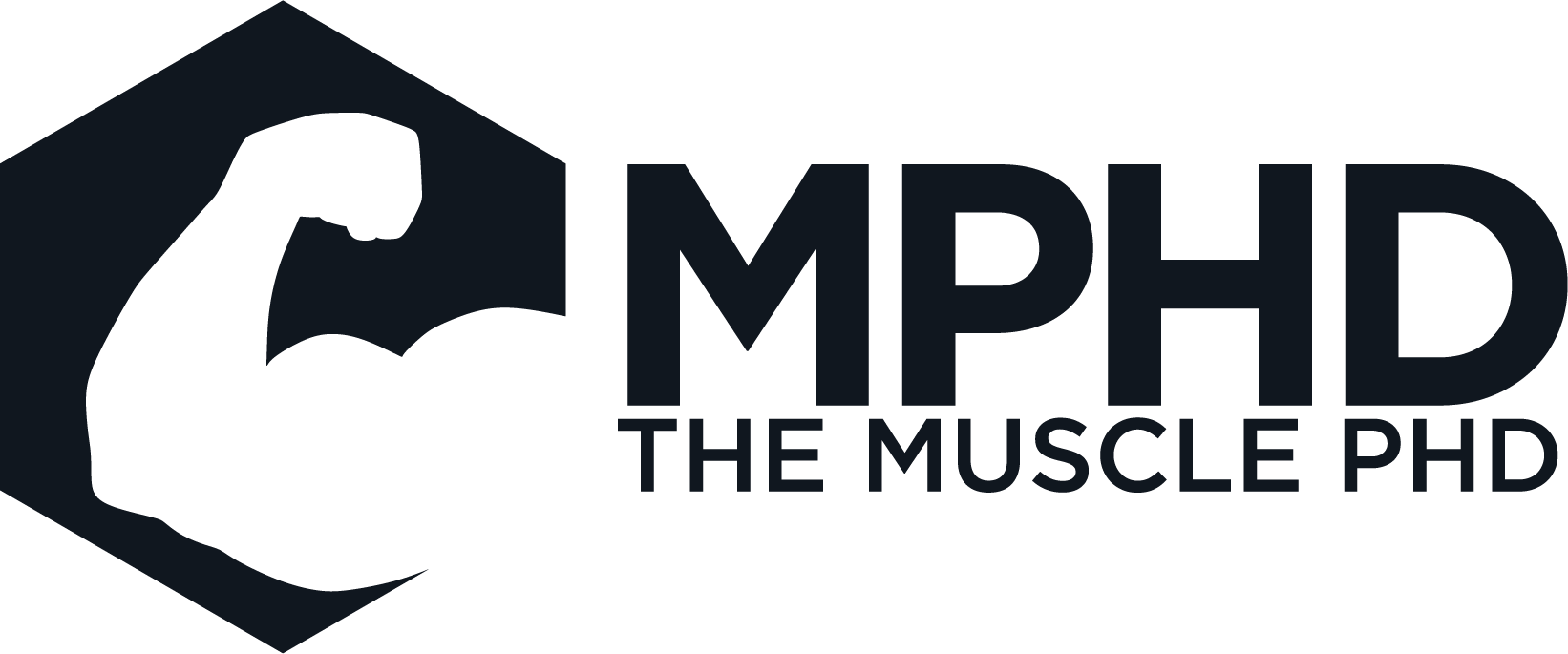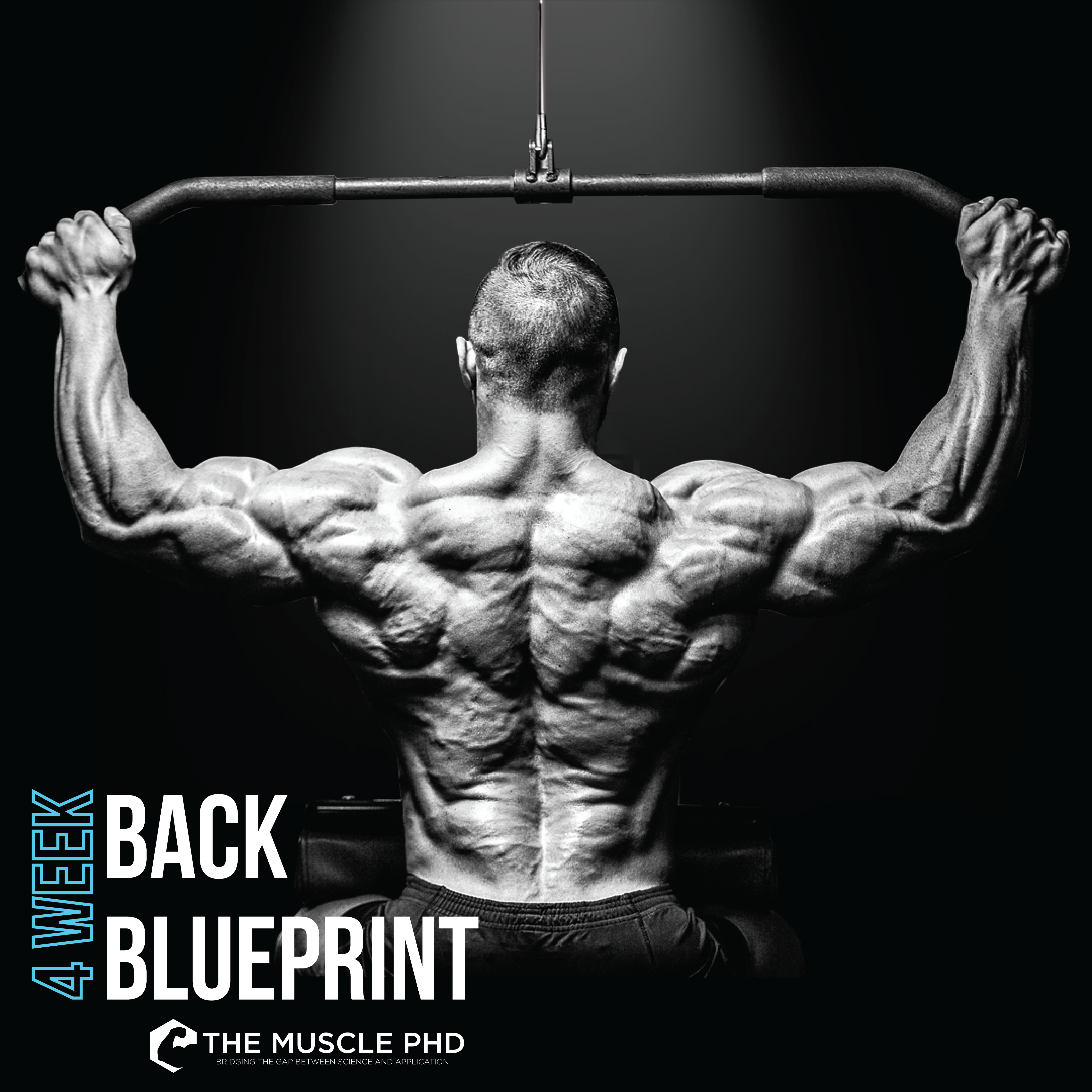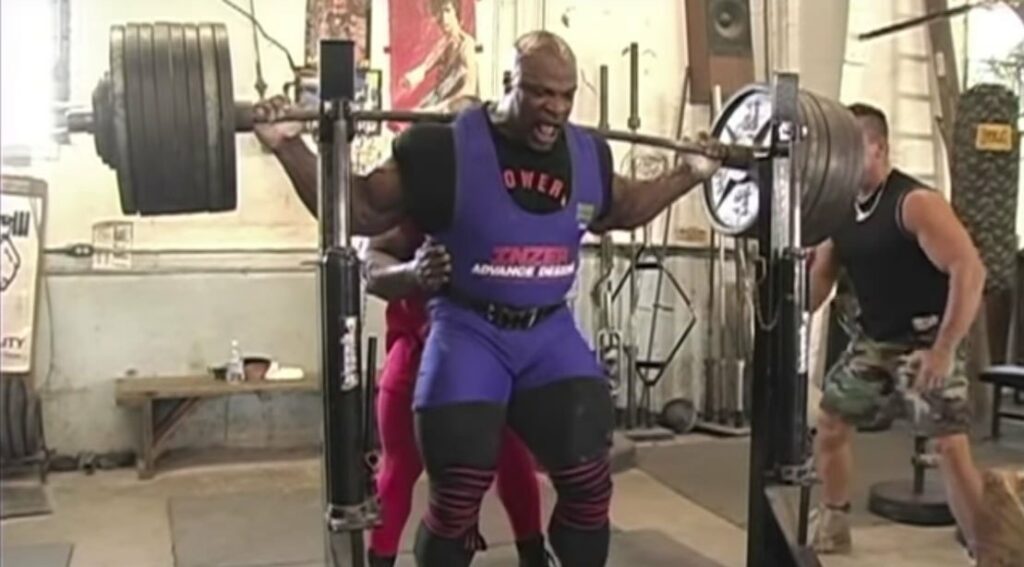Introduction
We all know that bands and chains are the coolest and most hardcore-looking gym accessory, but are they actually effective? What do they actually do? Let’s check it out.
Mechanics of a Normal Lift
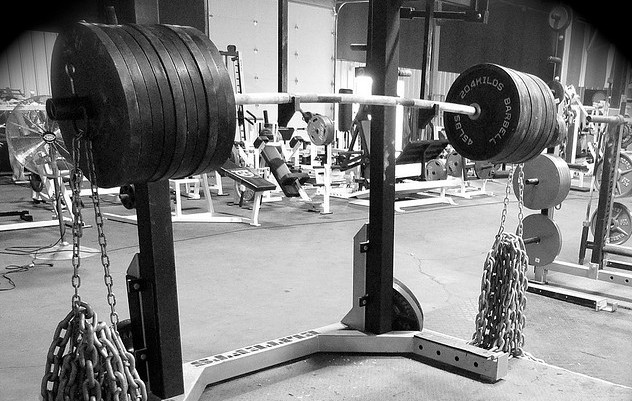 The first things worth understanding are the mechanics and kinetics of a normal barbell lift – we’ll use the bench press as it’s an easy example that most people can relate to. As the bar gets closer to your chest, you lose some of the natural mechanical advantage that you have over the barbell. This leads to a higher requirement for force production in these positions to overcome this mechanical disadvantage (6). As you begin the positive portion of a bench press, the same high force production is required as the bar is still close to your chest. Interestingly enough, as you start to push the bar away from yourself, you gain mechanical advantage over the bar and your muscles begin to produce force more efficiently. This ultimately leads to a lower force production requirement and decelerates the weight – partly due to the mechanical advantage and the pre-existing momentum in the barbell (6,13,15).
The first things worth understanding are the mechanics and kinetics of a normal barbell lift – we’ll use the bench press as it’s an easy example that most people can relate to. As the bar gets closer to your chest, you lose some of the natural mechanical advantage that you have over the barbell. This leads to a higher requirement for force production in these positions to overcome this mechanical disadvantage (6). As you begin the positive portion of a bench press, the same high force production is required as the bar is still close to your chest. Interestingly enough, as you start to push the bar away from yourself, you gain mechanical advantage over the bar and your muscles begin to produce force more efficiently. This ultimately leads to a lower force production requirement and decelerates the weight – partly due to the mechanical advantage and the pre-existing momentum in the barbell (6,13,15).
Mechanical advantage refers to both the position of the barbell over the joint and the strength curve, or length-tension curve, of the muscle. The length tension curve describes how a muscle produces force at varying lengths. For most muscles, optimal concentric force production occurs somewhere in the middle of the joint range of motion (2,6,7,13,15). This means that a muscle is producing its highest level of force in the same area where you have a great mechanical advantage over the bar. Sounds like a recipe for smoking the rep, huh?
Lastly, recall the momentum idea we touched on a minute ago. Newton’s First Law states that an object in motion tends to stay in motion. Since the barbell is already in motion from the first part of the lift, it’s much easier to maintain that motion in the second half of the lift. This is one more reason force production and muscle activation decrease in the second half of a normal lift. If you’ve ever seen someone fail a bench press, they typically fail after pressing the bar about halfway up. If you don’t train heavy bench very often, you’re not used to having to push through this area since you’re used to the barbell always having plenty of momentum coming off the chest.
Accommodating Resistance
So, what’s the answer to all of these issues? Accommodating resistance or, more simply, bands and chains. Bands and chains act to add tension or weight throughout the range of motion of a lift which better matches the length-tension curve of a muscle and the mechanical advantage you gain over the weight throughout the lift (7,12,14,16,17). This ultimately defeats the decrease of force production and barbell deceleration observed in normal lifts (12,16,17,20).
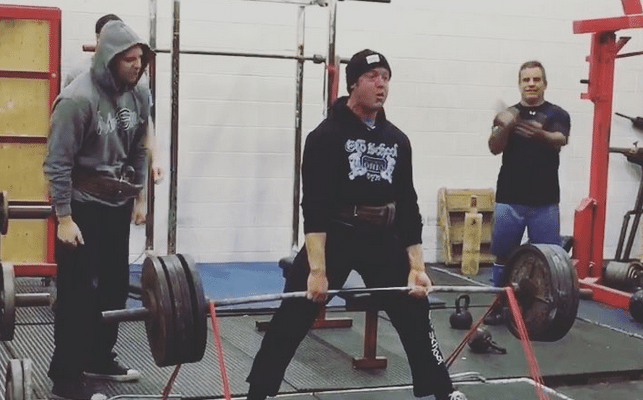 If bands and chains are the, “answer,” are they really effective? In short, yes. Studies have shown similar, if not greater, strength gains from using bands and chains compared to normal weights (1,3,8,10,14,16,17). I think there are two main reasons for this: obviously the first reason is the fact that bands and chains challenge the muscle through its entire strength curve. The second reason is that bands and chains are a novel stimulus for most people. Introducing a new exercise will usually result in quick gains so using bands and chains is a great way to add variation to a program.
If bands and chains are the, “answer,” are they really effective? In short, yes. Studies have shown similar, if not greater, strength gains from using bands and chains compared to normal weights (1,3,8,10,14,16,17). I think there are two main reasons for this: obviously the first reason is the fact that bands and chains challenge the muscle through its entire strength curve. The second reason is that bands and chains are a novel stimulus for most people. Introducing a new exercise will usually result in quick gains so using bands and chains is a great way to add variation to a program.
Another instance where it’s easy to appreciate the effects of bands and chains is the idea of intent. It can be difficult to train people to move weights explosively, however, bands and chains often make this process much easier. This may be due to a few reasons, such as the theory that the heavier initial weight might cause more CNS stimulation from the get-go – essentially, you’re primed for a heavier weight than what you experience at the bottom of the movement. Or even more simple reasons, including the fact that you have to move faster in order to overcome the ever-increasing band tension throughout a movement. In my experience as a strength and conditioning coach, I can rattle off several athletes and clients who greatly benefited from the use of accommodating resistance in their training program.
Applications
How should you go about using bands and chains, then? First off, bands and chains should mostly be used on free weight, compound movements like squats, deadlifts, or bench presses. You can set them up on machines or isolation exercises, it’s just a little awkward sometimes. Olympic lifts are tricky to set up with bands and I wouldn’t recommend that to anyone other than an experienced competitive weightlifter. If you’re trying to decide between bands and chains, studies show that both are equally effective for increasing strength levels (8,10), so whatever looks cooler to you should be your choice. Start with lighter chains or thinner bands to get used to the movement then progress from there. Bands are usually easier to get your hands on as many equipment retailers sell bands these days. Your best bet for acquiring [cheap] chains will be from a hardware store or even a scrap yard. You’ll need a lot of chains to add a decent chunk of weight, so I typically recommend going for bands instead. However, the “weight” from bands certainly feels different than a “dry” weight like chains or plates, so keep that in mind if you want to keep as much specificity in your training as possible.
Another consideration while using bands and chains is intensity; there are two ways to go about bands and chains when it comes to intensity. The first method is adding bands or chains to working weights you’re already using. Your goal is to overload the top of the movement – if you decrease weight too much to balance out the added resistance, you’re not going to have enough weight in the bottom position to fully stimulate the muscle (19). The second way to use bands and chains is by starting with a light weight and trying to move the weight as fast as possible – this is known as the compensatory acceleration method (2,9,10,18). Here, you’ll start with 40-60% of your 1RM, add bands or chains to the bar, and perform 8-12 sets of 2-3 reps while trying to move the bar as quickly as possible (16,17). Your rest periods will be short, between 15- and 45-seconds. The compensatory acceleration method has been shown to be incredibly effective at increasing strength and power production (2,10,18).
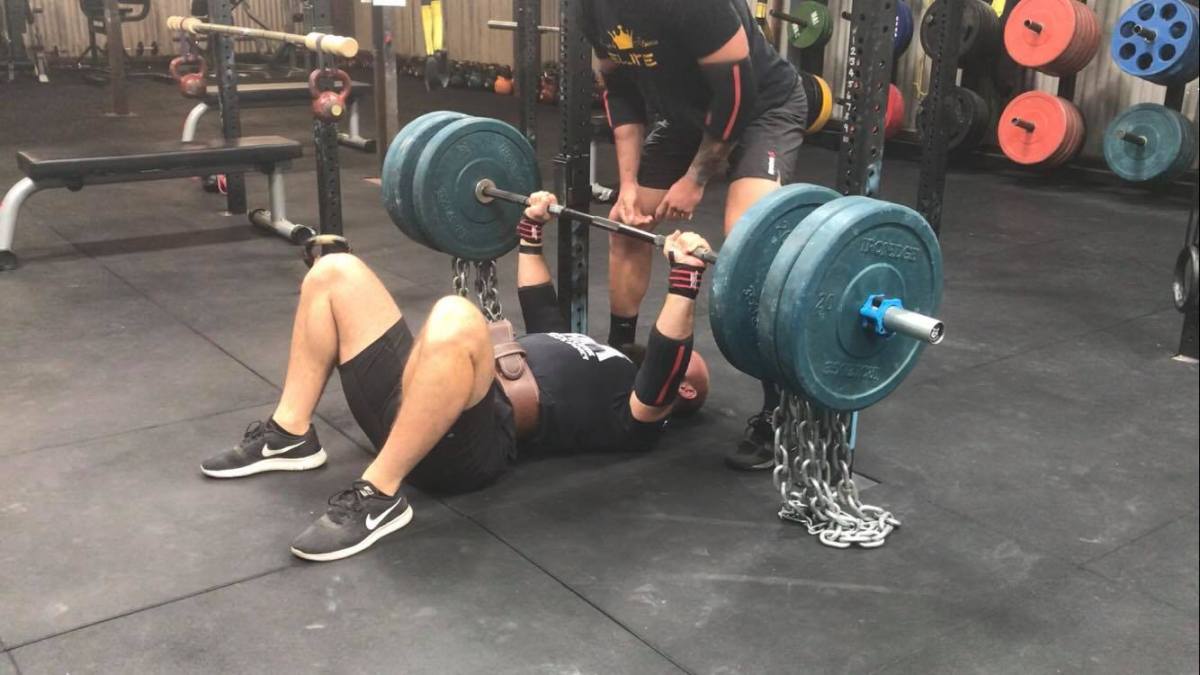 What if you don’t have access to bands and chains? That’s okay, you can still use the compensatory acceleration method with normal weights – you’ll just want to use heavier intensities within the 60-80% 1RM range. Using compensatory acceleration with normal weights has also been shown to be extremely effective at increasing strength and power and can even increase muscle activation (2,9).
What if you don’t have access to bands and chains? That’s okay, you can still use the compensatory acceleration method with normal weights – you’ll just want to use heavier intensities within the 60-80% 1RM range. Using compensatory acceleration with normal weights has also been shown to be extremely effective at increasing strength and power and can even increase muscle activation (2,9).
Overall, bands and chains are definitely effective for increasing muscle strength. The increase in muscle strength and power can eventually lead to greater size gains so even bodybuilders stand to benefit from the use of bands and chains. As with any new exercise, start with lighter chains or skinnier bands and work your way up as you get comfortable. Use your normal weights and sets/reps schemes for strength and size gains while power gains stem from weights in the 40-60% 1RM range and 2-3 reps per set moving as quickly as possible. If you don’t have access to bands or chains, simply try to move weights in the 60-80% 1RM range as quickly as possible to achieve similar gains.
Conclusion
All-in-all, bands and chains are a useful tool for improving your performance in the gym. These can even be great options for overcoming injuries; since the weight is lightest at the most difficult part of the lift, you can use bands and chains to overload the top portion while the bottom portion doesn’t bother your injury.
At the end of the day, bands and chains aren’t magic. Nor is anything else in the gym. Anyone who tells you that you have to use a certain method or train a certain way is either close-minded or trying to sell you something. Use bands and chains as a tool if they fit your goals, but remember to rotate “dry” weights as well, especially if you’re a powerlifter or weightlifter.
Easter Egg
Note: At the time of publishing, original articles from the cited issues of Powerlifting USA are no longer circulating on the internet. Therefore, articles published by Louie Simmons, reference numbers 16 and 17, are linked to a similar article on the Westside Barbell website. If the original articles resurface, we’ll be sure to update the links on this page.
References
- Ataee, J., Koozehchian, M. S., Kreider, R. B., & Zuo, L. (2014). Effectiveness of accommodation and constant resistance training on maximal strength and power in trained athletes. PeerJ, 2, e441.
- Behm, D. G., & Sale, D. G. (1993). Intended rather than actual movement velocity determines velocity-specific training response. Journal of Applied Physiology, 74(1), 359-368.
- Berning, J. M., Coker, C. A., & Adams, K. J. (2004). Using chains for strength and conditioning. Strength & Conditioning Journal, 26(5), 80-84.
- Bompa, T. O., & Buzzichelli, C. (2018). Periodization-: theory and methodology of training. Human Kinetics. Champaign, IL.
- Ebben, W. E., & Jensen, R. L. (2002). Electromyographic and kinetic analysis of traditional, chain, and elastic band squats. The Journal of Strength & Conditioning Research, 16(4), 547-550.
- Elliott, B. C., Wilson, G. J., & Kerr, G. K. (1989). A biomechanical analysis of the sticking region in the bench press. Medicine & Science in Sports & Exercise, 21(4), 450-462.
- Fleck, S. J., & Kraemer, W. (2014). Designing Resistance Training Programs, 4E. Human Kinetics. Champaign, IL.
- Ghigiarelli, J. J., Nagle, E. F., Gross, F. L., Robertson, R. J., Irrgang, J. J., & Myslinski, T. (2009). The effects of a 7-week heavy elastic band and weight chain program on upper-body strength and upper-body power in a sample of division 1-AA football players. The Journal of Strength & Conditioning Research, 23(3), 756-764.
- Jones, K., Hunter, G., Fleisig, G., Escamilla, R., & Lemak, L. (1999). The effects of compensatory acceleration on upper-body strength and power in collegiate football players. The Journal of Strength & Conditioning Research, 13(2), 99-105.
- Jones, M. T. (2014). Effect of compensatory acceleration training in combination with accommodating resistance on upper body strength in collegiate athletes. Open Access Journal of Sports Medicine, 5, 183-189.
- Kraemer, W. J. (2002). Developing a strength training workout. Strength Training For Sport, 37-54.
- Kraemer, W. J., & Ratamess, N. A. (2004). Fundamentals of resistance training: progression and exercise prescription. Medicine and Science in Sports and Exercise, 36(4), 674-688.
- Lander, J. E., Bates, B. T., Sawhill, J. A., & Hamill, J. (1985). A comparison between free-weight and isokinetic bench pressing. Medicine and Science in Sports and Exercise, 17(3), 344-353.
- McCurdy, K., Langford, G., Ernest, J., Jenkerson, D., & Doscher, M. (2009). Comparison of chain-and plate-loaded bench press training on strength, joint pain, and muscle soreness in Division II baseball players. The Journal of Strength & Conditioning Research, 23(1), 187-195.
- Newton, R. U., Kraemer, W. J., Häkkinen, K., Humphries, B. J., & Murphy, A. J. (1996). Kinematics, kinetics, and muscle activation during explosive upper body movements. Journal of Applied Biomechanics, 12(1), 31-43.
- Simmons, L. P. (1999). Bands and chains. Powerlifting USA, 22(6), 26-27.
- Simmons, L. P. (1996). Chain reactions: Accommodating leverages. Powerlifting USA, 19(12), 2-3.
- Swinton, P. A., Lloyd, R., Agouris, I., & Stewart, A. (2009). Contemporary training practices in elite British powerlifters: Survey results from an international competition. The Journal of Strength & Conditioning Research, 23(2), 380-384.
- Tan, B. (1999). Manipulating resistance training program variables to optimize maximum strength in men: a review. The Journal of Strength & Conditioning Research, 13(3), 289-304.
- Wallace, B. J., Winchester, J. B., & Mcguigan, M. R. (2006). Effects of elastic bands on force and power characteristics during the back squat exercise. The Journal of Strength & Conditioning Research, 20(2), 268-272.
- Wyland, T. P., Van Dorin, J. D., & Reyes, G. F. C. (2015). Postactivation potentation effects from accommodating resistance combined with heavy back squats on short sprint performance. The Journal of Strength & Conditioning Research, 29(11), 3115-3123.
From being a mediocre athlete, to professional powerlifter and strength coach, and now to researcher and writer, Charlie combines education and experience in the effort to help Bridge the Gap Between Science and Application. Charlie performs double duty by being the Content Manager for The Muscle PhD as well as the Director of Human Performance at the Applied Science and Performance Institute in Tampa, FL. To appease the nerds, Charlie is a PhD candidate in Human Performance with a master’s degree in Kinesiology and a bachelor’s degree in Exercise Science. For more alphabet soup, Charlie is also a Certified Strength and Conditioning Specialist (CSCS), an ACSM-certified Exercise Physiologist (ACSM-EP), and a USA Weightlifting-certified performance coach (USAW).
